Treat children as smart as you want them to be. I wish I had the opportunity to dig into books like It’s Tough to be Tiny when I was in elementary school. When I was that age I was always curious about nature, specifically the tiny things that exist in certain biomes. It’s not that I’m implying books of this sort would’ve turned me into a scientist, but their fun, STEM-centered nature might’ve thwarted at least one or two seasons of my wasting time watching Rock of Love. So, let us look at a fun STEM book that provides something for audiences from elementary through middle school.
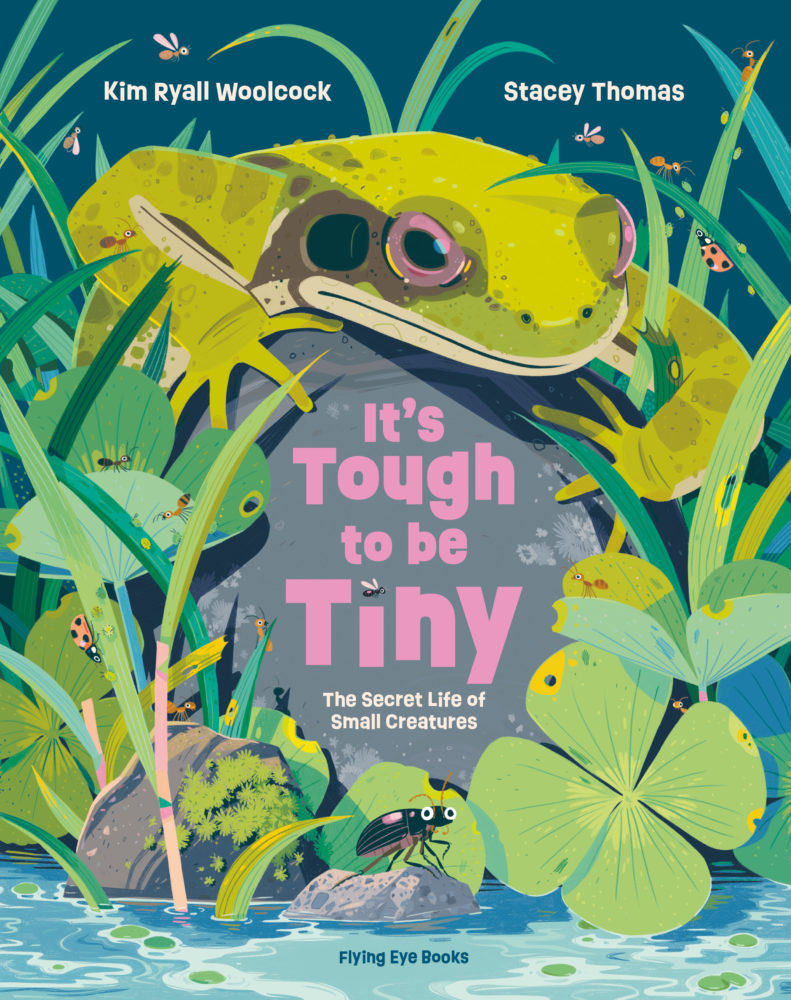
That’s a massive age range because very few illustrated books have the ability to realistically entertain and educate at the same time to these levels. Those younger ages need to be considered, with read-aloud text or words that are simple enough for middle to upper-elementary ages to handle, but not too challenging. The illustrations need to be engaging, and immersive and keep the attention of those young ages, without being too babyish or appearing too old.
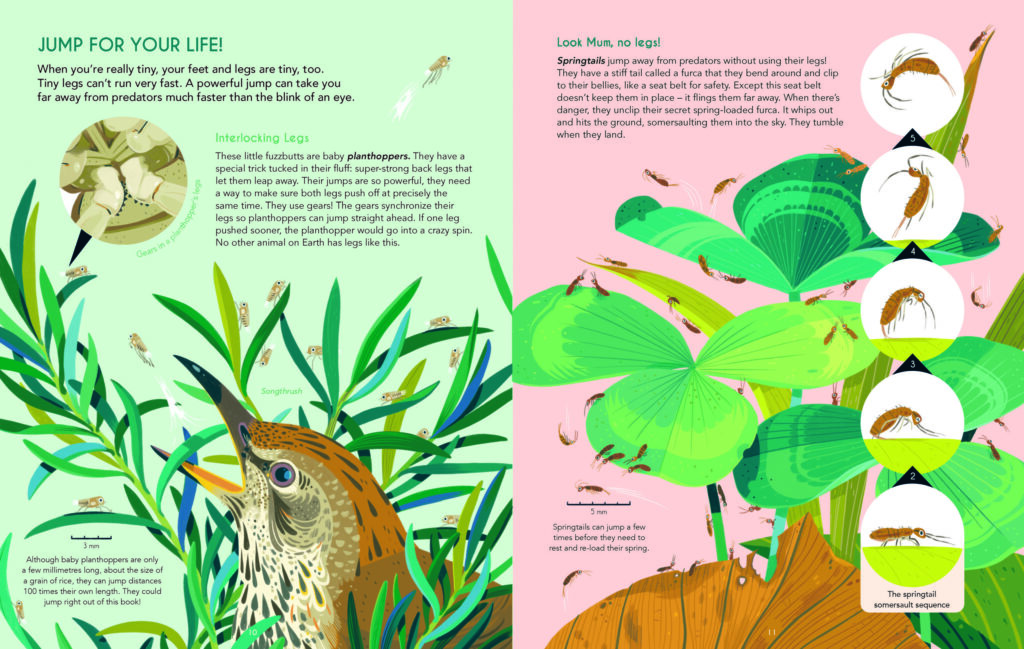
It’s just as tricky balancing the scale for those older readers. For them, the text needs to be educational, not the sort of cookie-cutter information they’ve seen in Nat Geo Kids. Those readers need more details, and nuggets of animal facts that will help make their middle school biome project on par with the grades that they think they deserve.
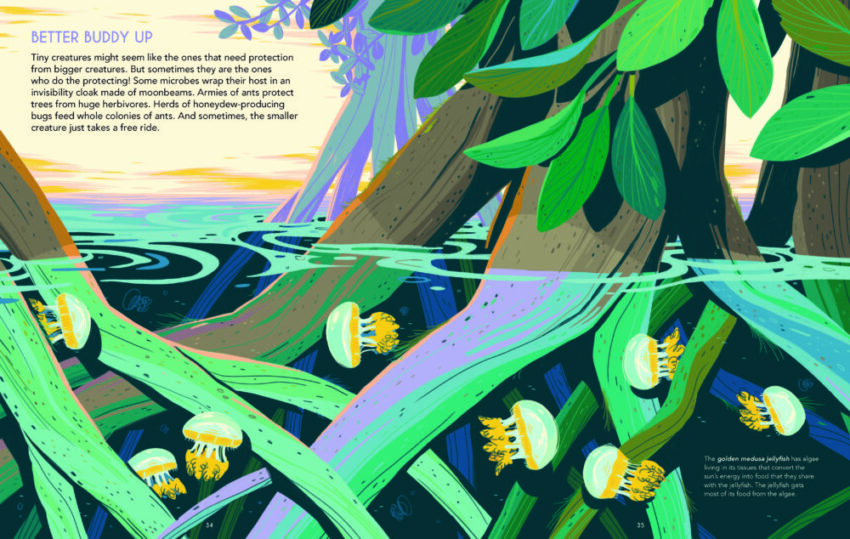
It’s Tough to be Tiny is a very smart illustrated book that accomplishes both things for both age camps. The illustrations have colors and shapes that are immediately attractive to elementary school ages. However, they’re realistic, far from babyish, and provide micro and macro views that will make those animal-curious kids dig in.
The text brims with life to younger audiences that are having is read aloud to them. It is STEM, but each page has its own narrative because it’s broken up into the animals or characteristics that support each small creature. We read about a previously unknown insect, to us anyway, called springtails. Their surprisingly unoriginal name stems from the fact that they have a spring-loaded tail that’s able to snap them from one place to another in case there’s a big emergency. I imagine this to be a more unreliable and very unpredictable TARDIS that just turbo-charges the insect from one area of a leaf to another part of the plant. However, the manner in which the text is written is one that’s engaging and educational enough for those lower middle school kids to merit inclusion into their papers.
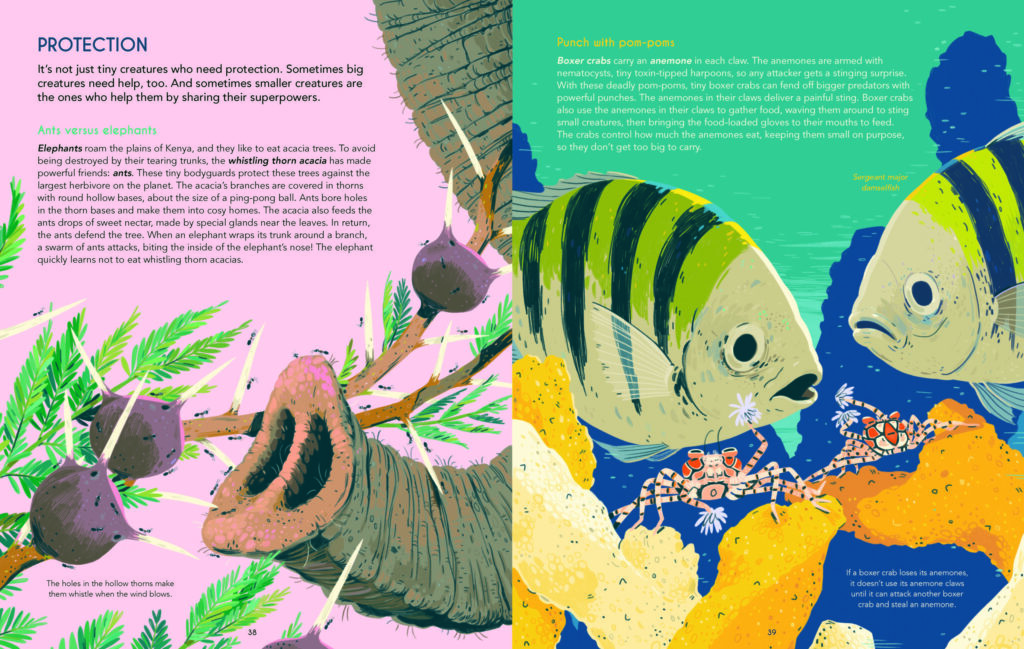
It’s Tough to be Tiny is steeped in STEM knowledge and cool facts. The tough part for those older audiences is to realize that it’s not a baby book. When you first open the book you’ll see a chance for kids to write their name in it, a la, “This book belongs to …….”, and they’ll associate that with books for younger generations, and not the esteemed elder statesmen of sixth or seventh grade.
However, the content in It’s Tough to be Tiny is on par for those students who are seven through 13 to understand. Those younger students will have to have to some of the words read to them, but they’ll understand the situations. The depth of the illustrations help in that process by showing the songthrush, who’s just on the verge of eating the springtails, both on the same two pages. When you turn the page you’ll read about something else that’s just as fascinating, but different enough to make teachers more interested in your paper and be the water fountain talk at your school.
It’s Tough to be Tiny, The Secret Life of Small Creatures is by Kim Ryall Woolcock, with illustrations by Stacey Thomas and is available on Flying Eye Books, an imprint of Nobrow.
There are affiliate links in this post.

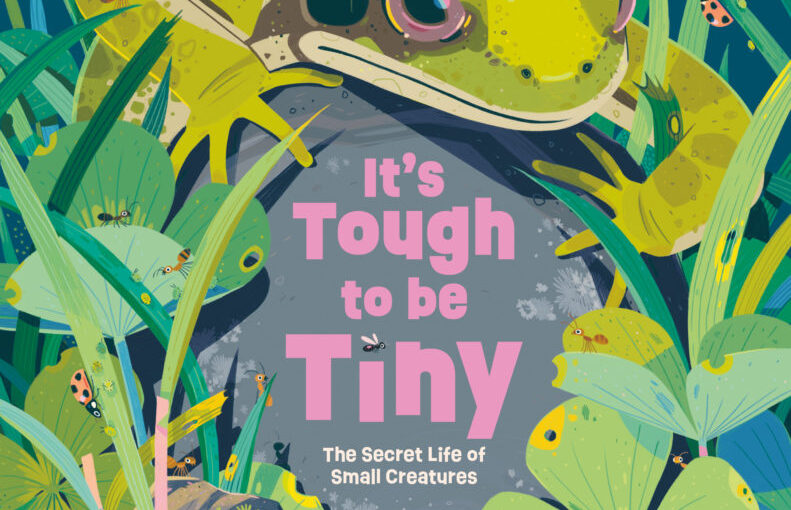



 Facebook
Facebook Twitter
Twitter Flickr
Flickr GooglePlus
GooglePlus Youtube
Youtube